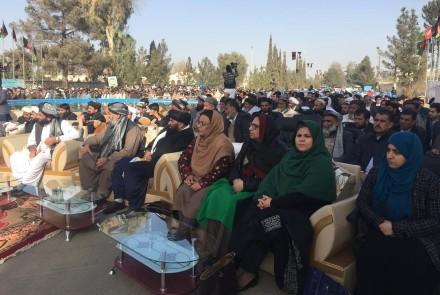Give Ceasefire a Chance
Wazhma Frogh writes that the ceasefire announced by the Taliban--and reciprocated by the Afghan government--has made us all hopeful.
by Wazhma Frogh
At the end of April, the United Nations Assistance Mission (UNAMA) reported that over 500 civilians, including 150 children, were killed and injured since the US-Taliban deal had been struck in Doha in February this year. We were just grappling with these numbers when the attack on the Kabul maternity hospital shocked the whole country and the world. Infants, pregnant women, new mothers and hospital workers were shot dead. On the same day, in a funeral in another corner of the country, scores of civilians were killed. This was the story of just one day in Afghanistan. Conflict continues to take a huge toll on civilians despite the peace deal signed between the US and the Taliban.
The US-Taliban agreement is anchored on the assumption that there will be successful negotiations between the Afghan government and the Taliban, and this will pave the way for a new arrangement between the two, and the US troops will withdraw simultaneously. But the reality on the ground tells another story. If the level of violence does not decrease, and attacks continue, the war will continue. No matter how much the Taliban will “progress” or not, the level of armed violence will turn Afghanistan into a much safer haven for terrorists--the original sin that brought US forces to Afghanistan in the first place.
I have been part of a long-time women’s movement for the past 20 years in Afghanistan that continues to work locally and nationally to build peace and resolve conflicts in homes, communities and society at large. As we mobilize women and girls in different communities, we try hard to promote the culture of peace and non-violence for our kids and youth. However, our work has been heavily impacted by attacks and insurgent activities.
As part of my work with the Afghanistan High Peace Council, we conducted a national dialogue across almost all the provinces of Afghanistan in 2017-2018. Conversations were held with millions of Afghans from all walks of life. Everyone was asking for an end to the violence and bloodshed.
My experience from Helmand was startling. Helmand has been the stronghold of the Taliban insurgency for years, and there is a huge count of civilian casualties from that province. When we visited Helmand, we had a crowd of around 3 to 4,000 people coming to us and telling us how much they wanted to end this conflict. We met hundreds of women. We didn’t come across a single family who hadn’t suffered a family member’s death— with many of those killed serving either with the police or with the Taliban insurgency. Some families had both a son in the national security forces and another in the Taliban insurgency. Their mothers were crying and asking for an end to the bloodshed.
What I learned in Helmand was that mothers of the Taliban fighters had a double burden on their shoulders because their sons were considered responsible for the civilian losses, and they—the mothers--felt the pressure from the rest of the community but they didn’t want their sons to get killed either.
A lot of the activist movements for the ceasefire were initiated by people and civil society organizations across the country, and their efforts resulted in the first ceasefire during Eid of 2018. Since then we learned that it’s possible to give ceasefire a chance--a longer chance--so that it can enable us to move towards the path of peace.
For the past two years, Afghan women have established a national level coalition coordinated by the Afghan Women’s Network, which is called “Our Voice for Our Future.” It has brought together women leaders from all over the country who are calling for a ceasefire as part of the negotiations between the US and the Taliban. They’ve engaged families and communities in their discussions and everyone wants a ceasefire and a reduction in the violence.
The ceasefire announced by the Taliban--and reciprocated by the Afghan government--has made us all hopeful. My family visited their fields and gardens in the countryside and you could see the happiness on people’s faces--despite the COVID-19 spread in the community—and the hope in their eyes. We want this hope to turn into a dream, a dream for a better Afghanistan.
We have come a long way in the new Afghanistan for the past 20 years and the youth in this country can actively engage in a national peacebuilding process if the conflict comes to an end and the violence is reduced. My understanding is that if the ceasefire is given a chance and is extended, the intra-Afghan negotiations can start and include the Taliban in political structures and governance. If they respect the views and perspectives of the majority of Afghans, the country will move on a path to inclusive and sustainable peace and there won’t be any need for US or NATO forces to stay and fight in Afghanistan.
Wazhma Frogh is the founder of WPSO-Afghanistan and a peacebuilder. She is a senior member of the Afghan Women’s Network and writes extensively on Afghanistan peace and conflict matters.
All are welcome to submit a fact-based piece to TOLOnews' Opinion page.
The views expressed in the opinion pieces are not endorsed or necessarily shared by TOLOnews.
Contributors are responsible for the accuracy of the information in an opinion piece, but if it is discovered that information is not factual, a correction will be added and noted.